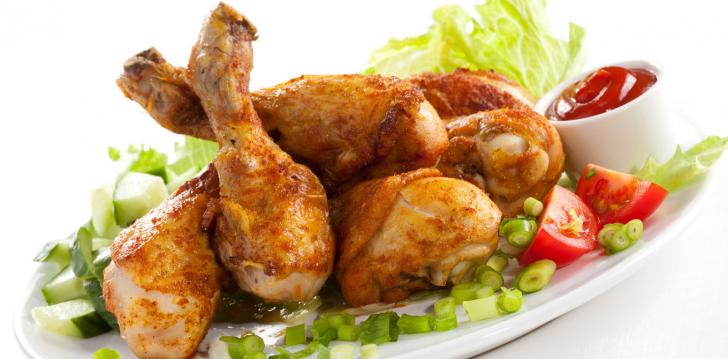
When you are getting ready to prepare raw poultry in the kitchen, you should ensure your raw chicken should not cross contaminate other products or surfaces and it should be cooked in proper internal temperature, which for chicken is a minimum of 75 °C or 165 °F.
We understand majority of times you cook chicken with proper handling and follow the safe practices, but we want that experience to be safe each and every time.
While people should know
not to eat undercooked chicken, not everyone knows all of the steps that need to take place in order to make sure the product is as safe as possible before it ends up in your grocery cart or on your plate.
We’ve put together some food safety tips to help you out:
CLEAN
- Wash hands with warm water and soap for at least 20 seconds before and after handling raw chicken and after using the bathroom, changing diapers and handling pets.
- Wash cutting boards, dishes, utensils, and counter tops with hot soapy water after preparing each food item and before you go on to the next food.
SEPARATE
- Avoid cross-contaminating other foods. Separate raw chicken from other foods in your grocery shopping cart, grocery bags, your kitchen and in your refrigerator.
- Use one cutting board for fresh produce and a separate one for raw meat, poultry and seafood.
COOK
- Cook chicken thoroughly. All poultry products, including ground poultry, should always be cooked to 75 °C. internal temperature as measured with a food thermometer; leftovers should be refrigerated no more than two hours after cooking.
- The color of cooked poultry is not a sure sign of its safety. Only by using a food thermometer can one accurately determine that poultry has reached a safe minimum internal temperature of 75 °C. throughout the product. Be particularly careful with foods prepared for infants, older adults and persons with impaired immune systems.
- When reheating leftovers, cover to retain moisture and ensure that chicken is heated all the way through. Bring gravies to a rolling boil before serving.
CHILL
- Make raw chicken the last items you select at the store. Once home, poultry products must be refrigerated or frozen promptly.
- Freeze raw chicken if it is not to be used within two days. If properly packaged, chicken can remain frozen for up to one year.
- After cooking, refrigerate any uneaten chicken within two hours. Leftovers will remain safe to eat for two to three days.
- Refrigerators should be set to maintain a temperature of 5 °C or below.
- Thaw frozen chicken in the refrigerator — not on the countertop — or in cold water. To speed up the process, chicken can be thawed in the microwave. Timing will vary.
- When marinating, make a separate batch of marinade to serve with the cooked chicken and discard anything that was used on the raw chicken. Always marinate chicken in the refrigerator, for up to two days.
- When barbecuing chicken outdoors, keep refrigerated until ready to cook. Do not place cooked chicken on the same plate used to transport raw chicken to the grill.
 When you are getting ready to prepare raw poultry in the kitchen, you should ensure your raw chicken should not cross contaminate other products or surfaces and it should be cooked in proper internal temperature, which for chicken is a minimum of 75 °C or 165 °F.
When you are getting ready to prepare raw poultry in the kitchen, you should ensure your raw chicken should not cross contaminate other products or surfaces and it should be cooked in proper internal temperature, which for chicken is a minimum of 75 °C or 165 °F.